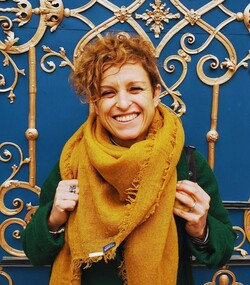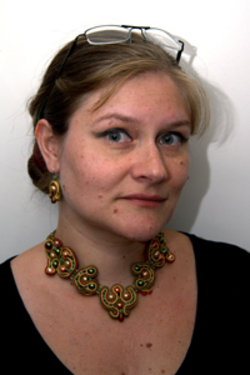A network is designed to enable scholars based in different countries and at different institutions to work together around a specific anthropological topic and to be open to others interested in the same topic to join. A network can improve collaborations and dialogue between EASA members and non-members and do so in a less formal way than a thematic association.
- Convenors of proposed networks should apply to the Networks Liaison Officers with an outline of the network. The application should include: (a) statement of intentions, objectives and rationale; (b)its proposed activities – in detail for the next two years and more schematically for the longer-term; (c) a statement about any links with existing networks and plans for possible joint activities, (d) a constitution that sets out how decisions will be made, including about the election of new network convenors; (e) a statement about how the network will work to be consonant with EASA’s commitments and values. The proposal should be accompanied by email confirmations from at least 20 members in at least five different countries stating their wish to actively participate in the network and whether or not they are EASA members.
- The minimum number of members for a network is 20. Not all need be members of EASA, but a majority should be and the convenors must be paid-up EASA members (of any category).
- Each network must have two convenors based in different institutions and in different countries.
- During their term in office, network convenors answer to the EASA Executive Committee, liaising regularly with the EASA Networks Liaison Officers (on the executive) and with EASA’s administrators (NomadIT).
- The decision about whether to approve a new network or not will be made by the EASA Executive Committee. Criteria will include the extent to which the topic and activities cannot be linked to and at least partly conducted under the remit of an existing network, as well as the strength of the case made. In some cases, the Executive Committee will ask for modifications or more details before the network is approved.
- After approval by the Executive Committee, EASA’s administrator will liaise with the convenors to create the network webpage within the EASA website and a network mailing list. Networks convenors should use the official mailing list established by EASA to communicate with members.
- The webpage should provide the name of the network, the convenors’ names, contact details, an explanation of the intentions and the objectives of the network, and announcements and details of any events and initiatives. It may be further developed and may include a list of the members.
- Networks may have “non-active members” who are neither participating in nor organising initiatives, but who are on the mailing list in order to be kept informed about events and participate in online discussions. Such members should not be listed on the website.
- Convenors should be elected every two years and be in office for no more than four years. Only active members should vote.
- Executive Committee members may also hold roles as network convenors, but in doing so, would excuse themselves from any Exec decisions about awards to networks, or levels of funding, in order to avoid any perceived conflict of interest
- EASA members can be active members of no more than five networks, but they may join the mailing lists of an unlimited number of networks.
- Networks convenors must send an annual report giving information on network activities for the EASA newsletter and website to the Networks Liaison Officer; this report is due at the end of November. This report should include a list of all active members, as well as of all activities.
- Network convenors are also invited to send information for the EASA Newsletter throughout the year; this information should be relatively brief (providing URLs) and includes announcements, calls, and information on publications and events.
- Members of networks are strongly encouraged to organise one or more network panels and a meeting at EASA’s biennial conferences. Panels proposed by a network will be part of the general selection process, but space permitting at least one panel per network is guaranteed to be on the programme. Networks can compete for more and may get special treatment if they collaborate. In addition, there may be a supplementary online part (‘green day’).
- At least one network convenor is expected to attend a meeting of network convenors at the biennial conference. Attendance may be online.
- Networks are strongly encouraged to organise events, such as workshops, especially during non-conference years. The Executive Committee may provide financial support for some network activities. A call for applications is regularly published on the association’s website and in the newsletter.
- Applications: network convenors submit a brief application describing the activity, a budget, and and details of how the funds are to be used.
- Final report: within one month of completion of the activity, network convenors must submit a report and accounts to the Networks Liaison Officer, detailing the activity and use of EASA funds. After approval by the Executive Committee, the final report will be published in the newsletter.
- The Executive Committee is free to allocate funds to particular networks, and to decide the related amount.
- Funds will be allocated on a non-competitive and a collaborative basis to encourage networks to apply for funding for joint events and initiatives, and to encourage networks to seek other sources for financing events.
- The Executive Committee will allocate money so as to help as many networks as possible and its decisions are final.
- The Executive Committee encourages networks to consider publications in the EASA book series (applications to be sent to the EASA book series editor), or in the EASA journal, Social Anthropology.
- Contracts with publishers in the name of the EASA network must be first approved by the EASA Executive Committee.
- If a network has not been active for one year, it will be reminded that it should be. If it is not active for two years or more, then it will be considered no longer active unless the convenors provide good reason and a plan for future activities.
- The EASA Executive Committee may close a network upon request of the convenors, or if a network has not been active for two years or more, after communicating with the network convenors, or if network activities explicitly contravene the intentions and objectives of the network or EASA. The Executive Committee reserves the right to re-launch an inactive network.

